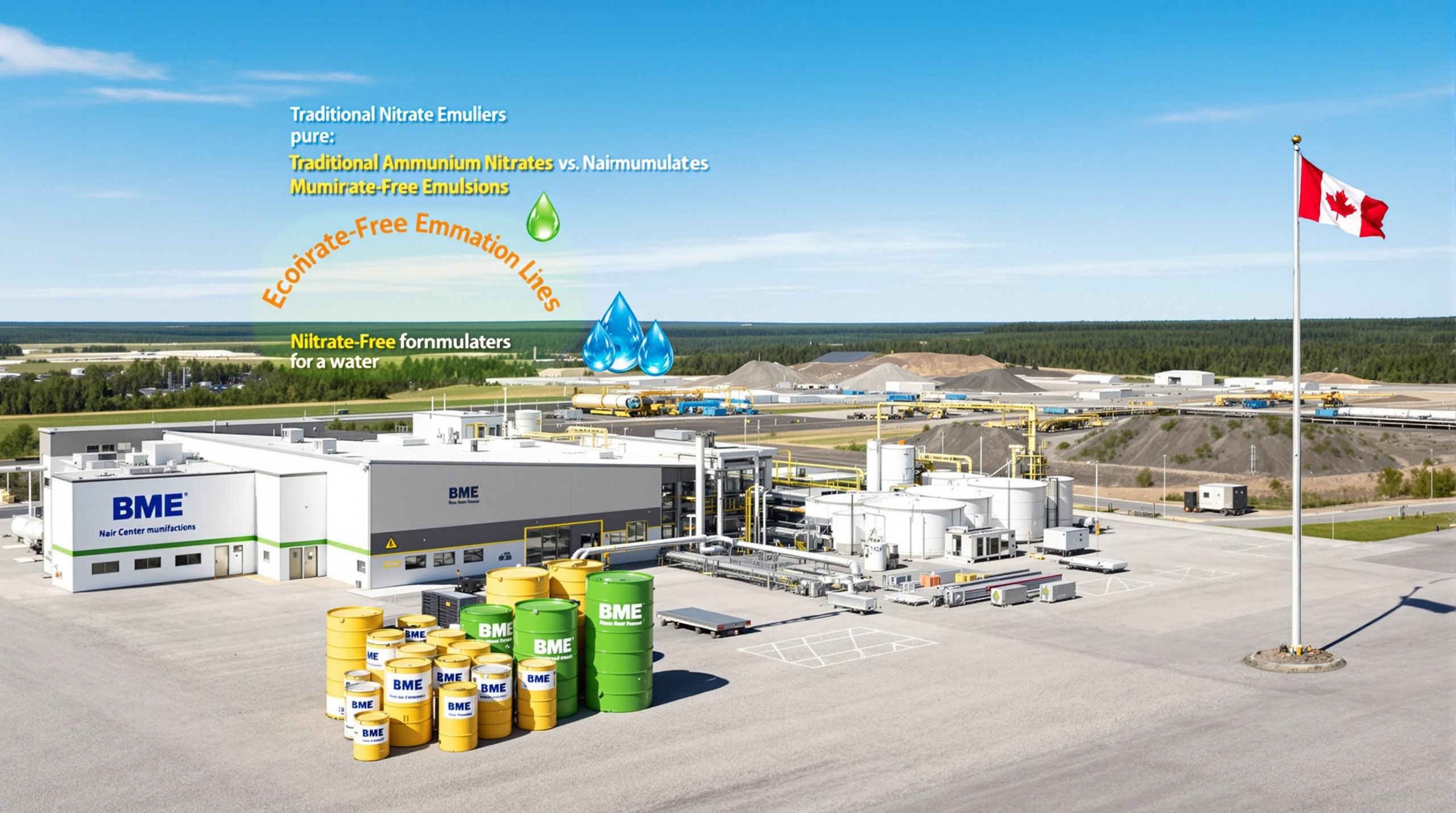Understanding the Silver Supply Deficit: Causes, Impacts, and Investment Implications
The global silver market is experiencing a profound transformation driven by a growing supply-demand imbalance. This structural deficit, estimated at 200 million ounces annually, represents approximately 18-20% of total market demand and creates significant implications for investors, industries, and global economies. The confluence of industrial necessity, monetary value, and constrained supply has positioned supply deficit in silver at a critical inflection point that demands closer examination.
What Is Causing the Current Silver Supply Deficit?
Growing Industrial Demand vs. Limited Production
The silver market is facing unprecedented pressure from expanding industrial applications, particularly in renewable energy sectors. According to expert analysis, the world is experiencing a substantial supply shortfall that cannot be quickly addressed through conventional means.
"There's going to be a 200 million ounce shortfall in the demand versus supply ratio for silver this year," notes Dr. Nomi Prins, financial expert and speaker at the 2025 Rule Symposium. "The forces that are driving the upside in silver are real and they're accumulating."
This deficit represents a significant portion of the global silver market, which sees annual demand of "around a billion or 1.1 billion ounces," according to Prins. Several factors contribute to this growing imbalance:
- Renewable energy expansion: Solar panel manufacturing requires silver for conductivity that cannot be easily substituted
- Electronics industry growth: Consumer and industrial electronics continue to incorporate silver components
- Medical applications: Silver's antimicrobial properties drive usage in healthcare products
- Infrastructure development: Construction and industrial applications create baseline demand
Perhaps most significantly, mining production faces severe constraints. "You can't just turn around and create silver," Prins emphasizes, highlighting the inelasticity of supply when faced with demand surges. Developing new mines requires years of exploration, permitting, and construction—creating a structural lag in the market's ability to respond to price signals.
The Scale of the Current Supply Shortfall
The magnitude of the current deficit cannot be overstated. At 200 million ounces against global demand of 1.1 billion ounces, the market faces an approximately 18-20% shortfall—a situation that rarely resolves quickly in commodity markets.
"Once you go from surplus to kind of flat to deficit… that only gets worse until it catches up," explains Prins, noting the compounding nature of supply shortfalls in critical minerals.
China's five-year development strategy has emerged as a significant catalyst for increased demand. "China's come out with a five-year strategy… they significantly need more silver to continue to develop their energy infrastructure and industrial infrastructure… solar panels," states Prins. This strategic initiative adds another layer of consumption pressure to an already constrained market.
Market Insight: Unlike many commodities, silver's deficit is particularly challenging because approximately 70% of production comes as a byproduct of mining other metals (primarily lead, zinc, copper, and gold). This means silver output often depends on production decisions for these primary metals rather than responding directly to silver prices.
How Does the Silver Market Compare to Other Precious Metals?
Silver vs. Gold Market Dynamics
Silver has demonstrated distinct performance characteristics compared to gold, though both metals respond to similar macroeconomic factors. Recent market action shows silver gaining momentum relative to its more famous counterpart.
"Silver has outperformed gold by a little bit," notes Prins, adding that while "gold's going to be $4,000 by the end of the year… silver… has recently started to pop out of that band," suggesting potential for accelerated price action.
Key differences between these monetary metals include:
- Market size: Silver's smaller market capitalization creates higher volatility and potential percentage gains
- Industrial component: Unlike gold, silver has substantial industrial demand (approximately 50% of annual consumption)
- Price accessibility: Silver's lower per-ounce price allows broader participation among retail investors
- Supply dynamics: Silver faces more significant production constraints as a frequently byproduct metal
These factors combine to create distinct investment characteristics, particularly during periods of supply deficit. Furthermore, understanding gold-silver ratio insights is crucial for investors looking to optimize their precious metals portfolio during market fluctuations.
Industrial Applications Creating Unique Demand Patterns
Silver's conductivity, reflectivity, and antimicrobial properties make it irreplaceable in numerous high-tech applications. Unlike gold, which sees minimal industrial consumption, silver maintains a robust baseline of non-investment demand regardless of market sentiment.
The photovoltaic (solar) industry represents one of the fastest-growing segments of silver demand. Each solar panel contains approximately 20 grams of silver, and as renewable energy installations accelerate globally, this consumption driver continues to strengthen.
Silver Industrial Demand Breakdown:
| Sector | Approximate Annual Demand | Growth Trend |
|---|---|---|
| Photovoltaic | 140M oz | Strong increase |
| Electronics | 250M oz | Steady increase |
| Automotive | 60M oz | Moderate increase |
| Medical | 30M oz | Steady increase |
| Other industrial | 200M oz | Stable |
This industrial necessity creates a fundamentally different demand structure than what exists for gold, potentially accelerating price discovery during periods of supply constraint. In addition, the ongoing silver market squeeze continues to put pressure on available physical supplies.
What Role Does China Play in the Silver Supply-Demand Equation?
China's Strategic Silver Acquisition
China has emerged as a dominant force in the silver market, with its five-year infrastructure plan specifically targeting increased silver usage. This strategic positioning creates significant implications for global supply chains and price dynamics.
"China's come out with a five-year strategy… they significantly need more silver to continue to develop their energy infrastructure and industrial infrastructure," explains Prins. This isn't merely incremental growth—it represents a fundamental shift in consumption patterns from the world's second-largest economy.
China's solar manufacturing sector alone accounts for approximately 80% of global production capacity, creating enormous silver demand concentrated in a single country. This strategic emphasis places China at the center of silver's demand trajectory for the foreseeable future.
Key components of China's silver strategy include:
- Solar manufacturing dominance: Supporting domestic and export markets
- Energy transition initiatives: Meeting climate goals through renewable deployment
- Industrial application development: Electronics, batteries, and advanced manufacturing
- Potential strategic stockpiling: Building reserves of critical minerals
Impact on Global Supply Chains
China's growing appetite for silver creates ripple effects throughout global supply chains. Western manufacturers increasingly face competitive pressure for available supplies as China's consumption accelerates.
This situation creates particular challenges for companies in Europe and North America that rely on silver inputs but lack the centralized purchasing power of Chinese state-backed enterprises. As silver becomes increasingly strategic, securing reliable supply becomes a competitive advantage.
Supply chain diversification efforts face significant obstacles due to the geographic concentration of silver production. Mexico, Peru, China, Russia, and Poland account for over 60% of global mine output, creating potential bottlenecks during periods of geopolitical tension.
Supply Chain Risk: The concentration of silver refining capacity compounds these challenges. China processes significant quantities of domestically mined and imported silver, creating potential for supply disruption if export restrictions were implemented similar to those seen with rare earth elements.
How Does the Silver Deficit Impact Investment Considerations?
Price Implications of Sustained Supply Shortages
The fundamental supply-demand imbalance in silver creates a compelling case for potential price appreciation. With a deficit representing nearly one-fifth of annual consumption, market dynamics suggest upward pressure over time.
"That is going to squeeze silver prices up," states Prins, highlighting the inevitable consequences of physical shortages in commodity markets. Unlike financial assets, physical silver cannot be created through monetary policy or digital means—it requires actual mining production, which faces significant constraints.
Historical precedent demonstrates that commodity markets eventually reflect physical realities, regardless of short-term trading patterns or paper market dynamics. The current deficit represents one of the most significant imbalances in recent silver market history, with the silver squeeze movement gaining momentum among retail investors.
Contributing factors to potential price discovery include:
- Physical market tightness: Growing premiums for physical delivery
- Industrial user inventory building: Companies securing supply chains
- Investment demand acceleration: Recognition of structural deficit
- Mining supply constraints: Limited new production coming online
Investment Vehicle Considerations
Investors seeking exposure to the silver deficit thesis have multiple options, each with distinct risk-reward characteristics:
Physical silver offers direct exposure without counterparty risk, providing pure play on the metal's price action. However, storage, insurance, and liquidity considerations must be factored into the investment thesis.
Mining equities provide operational leverage to rising silver prices, potentially delivering amplified returns during bull markets. Companies with primary silver production (rather than byproduct output) offer the most direct exposure to silver price movements.
ETFs and futures contracts create liquid exposure to silver prices but introduce counterparty considerations and may not perfectly track physical prices during periods of market stress.
Royalty and streaming companies offer an alternative approach, providing exposure to silver production while mitigating some operational risks associated with direct mining investments.
The optimal approach depends on individual risk tolerance, investment timeframe, and portfolio construction goals. Many sophisticated investors maintain exposure across multiple vehicles to balance liquidity needs with maximum upside potential. Understanding effective silver price strategies can help investors navigate this complex market.
What Are the Key Economic Indicators Affecting Silver Markets?
Interest Rate Environment and Monetary Policy
Federal Reserve policy decisions create significant implications for precious metals markets through multiple transmission mechanisms. Silver, with its dual monetary and industrial characteristics, responds to both financial and economic signals.
According to Prins, potential rate cuts of "75 to 100 basis points by year-end" could provide substantial tailwinds for silver prices. Lower rates reduce the opportunity cost of holding non-yielding assets while potentially weakening currency values—both supportive factors for precious metals.
The relationship between interest rates and silver prices operates through several channels:
- Real yield impact: Lower real (inflation-adjusted) yields typically support higher silver prices
- Dollar strength/weakness: Rate cuts often pressure the dollar, supporting commodities priced in dollars
- Economic stimulus: Rate cuts aim to boost economic activity, potentially increasing industrial silver demand
- Investment flows: Lower rates can drive capital toward alternative stores of value
Consumer Financial Health and Market Implications
The broader economic environment presents a complex picture for silver markets. Prins highlights concerning trends, including "negative GDP growth of 0.5% for Q1" and unemployment that "rose to 4.4%," suggesting economic headwinds that could temporarily dampen industrial demand.
At the same time, record personal debt levels and high interest rates on consumer debt (up to 29% on credit cards) are creating financial stress. This situation has immediate implications for precious metals markets.
"People are selling precious metals to pay off high-interest debt," notes Prins, identifying a near-term source of market pressure. However, this dynamic typically represents a transitory phase rather than a structural shift in market fundamentals.
The commercial sector shows similar stress indicators, with deteriorating loan quality suggesting broader economic challenges ahead. These conditions often precede monetary policy responses that ultimately support precious metals markets through currency devaluation effects.
Investor Alert: While economic weakness can temporarily suppress silver's industrial demand, it typically accelerates monetary policy responses that support precious metals prices. This creates a potential opportunity for counter-cyclical positioning before institutional capital recognizes the shift.
How Does Silver Compare to Other Strategic Metals?
Silver vs. Copper and Uranium
The global transition toward electrification and clean energy has elevated multiple metals to strategic status. Silver shares the spotlight with copper and uranium, though each metal offers distinct investment characteristics and supply-demand profiles.
Copper faces potential designation as a critical defense metal through Section 232 investigation, according to Prins. This could include "a 50% tariff" and would mean "copper all of a sudden has a renewed status as a strategic metal," creating significant market implications.
Uranium maintains its critical status for energy security and defense applications, with Prins advising investors to "always have uranium… in good jurisdictions" as part of a diversified metals portfolio.
Strategic Metal Comparison:
| Metal | Primary Applications | Supply Constraints | Geopolitical Factors |
|---|---|---|---|
| Silver | Electronics, solar, medical | Byproduct dependency, declining grades | China consumption growth |
| Copper | Electrification, construction | Permitting delays, water scarcity | Potential tariffs, Chile/Peru politics |
| Uranium | Nuclear power, defense | Underinvestment cycle, conversion bottlenecks | Kazakhstan concentration, Western security |
Each metal faces structural supply constraints relative to projected demand, creating potential investment opportunities across these critical materials. Additionally, understanding how tariffs impact silver prices is becoming increasingly important in today's geopolitical environment.
Rare Earth Elements and Strategic Resource Considerations
Beyond traditional precious and base metals, rare earth elements represent another critical component of the strategic minerals landscape. These materials, essential for magnets, electronics, and defense applications, face significant supply chain challenges.
Prins highlights an emerging opportunity through "Meteoric Resources' project in Brazil," which could potentially supply "5-15% of global rare earths." This development is particularly significant because rare earth supply chains "remain heavily concentrated in China," creating strategic vulnerabilities for Western economies.
The project offers advantages through "clay-based rare earth deposits" that provide "economic and environmental advantages" over traditional extraction methods. Its deposit size has "grown by about 35% in a year," demonstrating rapid expansion potential.
The diversification of critical mineral supply chains has become a geopolitical priority for many nations, with rare earths at the center of these concerns. This trend supports development of non-Chinese resources across multiple strategic metals, including silver.
What Are the Long-Term Projections for the Silver Market?
Supply Response Limitations
The silver deficit presents particularly challenging supply response limitations. Unlike many commodities, bringing new silver production online involves significant time, capital, and geological constraints.
Developing new silver mines requires years of exploration, permitting, and construction—creating an inherent lag in the market's ability to respond to price signals. Environmental permitting processes have grown increasingly complex in many jurisdictions, extending development timelines substantially.
Silver's status as a frequent byproduct of other metal mining operations creates additional complications. Approximately 70% of silver production comes from mines primarily focused on lead, zinc, copper, or gold. This means silver output often depends on production decisions for these primary metals rather than responding directly to silver prices.
The average timeline for developing a significant new silver resource from discovery to production typically exceeds 7-10 years, assuming favorable permitting conditions. This supply inelasticity reinforces the potential for sustained deficit conditions.
Technological Trends Driving Future Demand
Looking forward, multiple technological trends continue to drive silver demand growth:
- Energy transition technologies require increasing quantities of silver, with solar deployment accelerating globally
- 5G infrastructure deployment creates additional demand pressure through both base stations and devices
- Medical applications continue to expand silver's industrial footprint, particularly antimicrobial uses
- Emerging economies' industrialization drives baseline consumption growth across multiple sectors
These demand drivers operate alongside traditional investment demand, which may accelerate as awareness of the structural deficit grows. The combination creates a compelling long-term thesis for supply deficit in silver market dynamics.
"The demand for all of these assets… is not going to go away. And the supply cannot meet that demand quickly," emphasizes Prins, highlighting the fundamental mismatch between consumption growth and production constraints.
How Can Investors Position for the Silver Supply Deficit?
Portfolio Allocation Strategies
Precious metals allocation serves both defensive and growth objectives within a diversified portfolio. Physical silver provides direct exposure without counterparty risk, while mining equities offer operational leverage to rising metal prices.
The optimal allocation strategy depends on individual risk tolerance, investment timeframe, and existing portfolio composition. Common approaches include:
- Core physical holdings: Establishing a foundation of physical metal as insurance against financial system stress
- Tactical mining exposure: Adding mining equities during favorable market conditions for amplified upside
- Streaming/royalty companies: Gaining exposure with reduced operational risk through alternative structures
- Options strategies: Using options on silver ETFs to define risk parameters precisely
Diversification across metal sectors helps manage individual commodity volatility. Many investors maintain exposure to silver alongside gold, platinum group metals, and strategic base metals to capture different market cycles.
Timing Considerations for Silver Investments
Current market conditions suggest favorable entry points remain available, despite silver's recent outperformance relative to gold. The structural supply deficit typically takes time to fully manifest in price discovery, creating opportunity before institutional recognition drives broader participation.
Dollar-cost averaging represents a prudent approach to managing silver's inherent price volatility. Regular purchases of physical metal or mining shares help smooth entry points while building positions ahead of potential market repricing.
Long-term positioning aligns with the structural supply-demand imbalances that show little sign of resolution in the near term. "Once you go from surplus to kind of flat to deficit… that only gets worse until it catches up," notes Prins, highlighting the compounding nature of metal market imbalances.
Investment Strategy: Consider establishing core physical positions while maintaining tactical flexibility to add mining exposure during periods of market weakness or in response to specific catalysts like Fed policy changes.
What Risks Should Silver Investors Consider?
Market Volatility and Price Fluctuations
Silver prices can experience significant short-term volatility despite strong fundamental underpinnings. This volatility stems from several factors:
- Market size: Silver's smaller market capitalization creates higher susceptibility to trading flows
Ready to Capitalise on the Silver Supply Deficit?
Discover real-time alerts on significant silver discoveries and investment opportunities through Discovery Alert's proprietary Discovery IQ model, helping you stay ahead of market trends like the current 200 million ounce silver deficit. Visit our discoveries page to understand how major mineral discoveries can lead to exceptional returns and position yourself for the next big opportunity.




